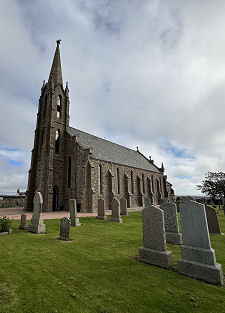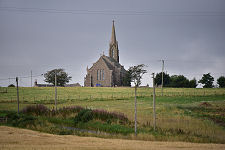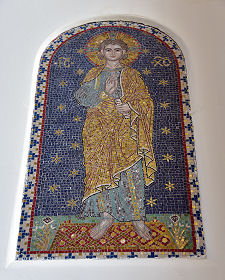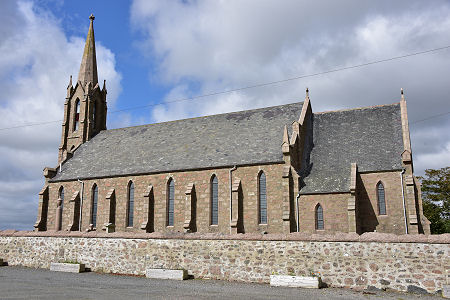 St James the Less Church |
Approaching from the south-west, the first you see of Cruden Bay is St James the Less Church, prominently positioned on Chapel Hill amid open fields. With a spire that makes it one of the most prominent landmarks in the area, St James's opened in 1843 and was the first commission of the Scottish architect William Hay.
The church you see today replaced one built on the same site in 1765. Before then, Episcopalians in the area had to worship among the windswept sand-dunes on the beach.
The name of the site, "Chapel Hill" is a clue that the story of Christian worship here goes back much further. There's a physical clue to this ancient history within the church in the form of the font, which came from a much earlier chapel built here to mark a battle between Danes and Scots in 1012. Who won? There's a clue in the origins of the name "Cruden", which comes from the Gaelic Croch Dain or "Slaughter of Danes". (Continues below images...)
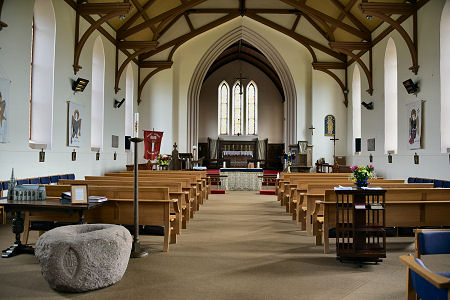 The Interior, Looking Towards the Altar |
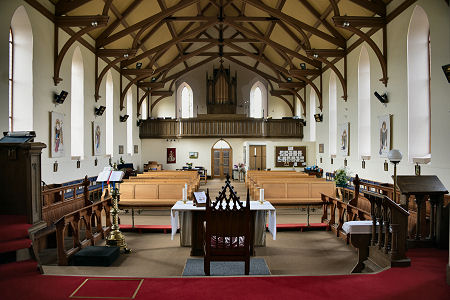 The Reverse View |
A major internal redesign took place in 1983 and other changes, like the addition of the neighbouring car park, have been made since then. What you find inside is a large, bright and welcoming space. The visible wooden trusses supporting the roof add considerably to the character of the interior.
There are some especially nice touches, such as a wall mosaic and a model of the church. Also of note are the wall hangings depicting Matthew, Mark, Luke and John as mystic symbols. They were made by Pam Whalley to adorn the walls following the 1983 renovations and are based on illustrations in the Book of Kells.
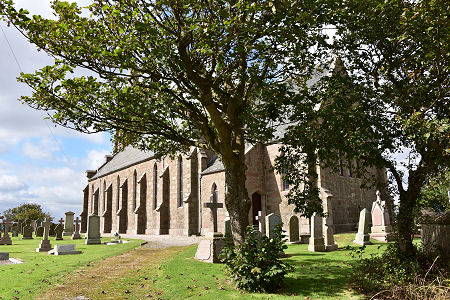 Seen from the Gate to the Main Road |

|
|
|
Visitor InformationView Location on MapGrid Ref: NK 102 361 Church Web Site What3Words Location: ///name.snippets.sleeper |
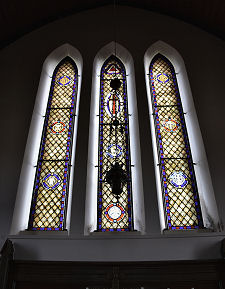 Stained Glass Windows |
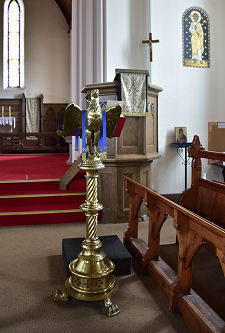 Pulpit and Lectern |
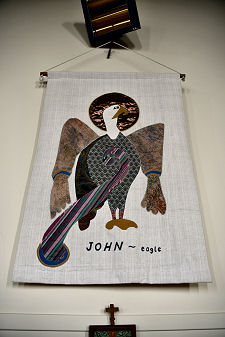 Wall Hanging - John |
 Wall Hanging - Luke |
